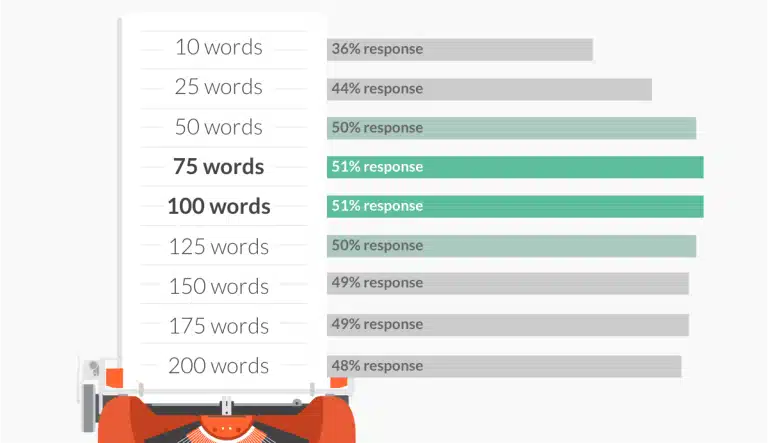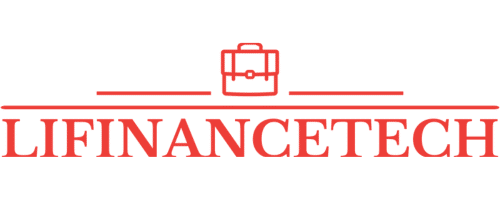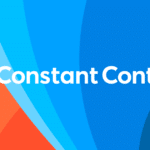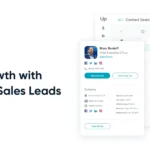
In today’s fast-paced digital world, the length of emails can greatly impact their effectiveness. Research shows that emails between 75-100 words strike the perfect balance, maximizing response rates and click-through rates.
To achieve this ideal length, it is crucial to eliminate unnecessary content and focus on brevity and clarity. By following strategies that prioritize succinctness, email marketers can boost engagement and ultimately improve return on investment (ROI).
In this article, we will explore the power of succinct emails and how they can enhance engagement and ROI in an innovative and impactful manner.
Key Takeaways
- The ideal email length for higher response rates and click-through rates is between 75-100 words.
- Short and concise emails are preferred to avoid being perceived as lazy.
- Editing emails and removing unnecessary words improves clarity and precision.
- Succinct emails increase response rates and engagement, leading to higher ROI.
The Ideal Email Length
The ideal email length, which is between 75-100 words, is crucial for achieving higher response rates and click-through rates (CTR), as shorter emails may lack sufficient information and effort while longer emails may result in lower engagement and ROI.
Studies by Boomerang in 2016 have shown a correlation between email response rates and CTR with word count, highlighting the importance of crafting effective email content within the ideal length range.
By optimizing email engagement through concise and impactful messaging, businesses can maximize their conversion rates and ultimately boost their ROI.

It is essential to recognize the impact of email length on the success of marketing campaigns and prioritize brevity and clarity in email copy.
A user-friendly email marketing platform ‘Constant Contact’- Read review
Importance of Email Length- Why it matters
The importance of brevity cannot be overstated, as more concise emails are preferred to avoid being perceived as lazy. Trimming unnecessary content helps keep email length in check, ensuring that the information provided is sufficient and effortful.
Research on response rates highlights the effectiveness of succinct emails in increasing engagement and maximizing the potential of generated leads. Being concise with email copy is crucial for success, as longer emails may result in lower response rates and CTR.
Therefore, prioritizing brevity and clarity in email communication is essential for boosting engagement and ROI.
Eliminating Extra Words
Eliminating superfluous words and refining email content is crucial for enhancing clarity and precision in communication. Employing effective editing techniques can significantly improve the overall quality of an email.
By removing extra words that add no value, the message becomes more concise and to the point, resulting in clearer and more impactful communication. Tools such as the Purdue Online Writing Lab provide examples of wordy sentences and their concise versions, allowing individuals to identify and eliminate unnecessary content.
For instance, replacing a sentence like ‘Imagine someone trying to learn the rules of chess’ with a more direct and concise statement effectively conveys the same idea.
Benefits of Being Succinct
Enhancing clarity and precision in communication, concise email content increases response rates and engagement. By focusing on key elements and removing unnecessary information, succinct emails are more likely to engage recipients and generate leads.
| Long Emails | Short Emails |
| Lower response rates and CTR | Increased response rates and engagement |
| May result in decreased ROI | Improved clarity and precision |
| Risk being perceived as lazy | Prioritizing brevity and clarity |
| More likely to be skimmed or ignored | Maximizing revenue growth |
As shown, short emails not only increase response rates but also improve clarity, ensuring that the message is effectively delivered.
Impact Of Email Length on ROI
The correlation between email length and the success of marketing campaigns is a critical factor to consider in order to improve ROI. Longer emails may result in lower response rates and click-through rates (CTR), while shorter and concise emails are more likely to engage recipients.
Talking about CTR, MarketingExperiments conducted a study in 2011 examining the impact of shorter email copy. Although slightly dated, their findings provide insights into the effects of reduced email length on recipient engagement.

Prioritizing brevity and clarity in email communication increases the chances of increasing response rates and CTR, ultimately leading to higher ROI.
Strategies for Keeping Email LeNgth Short
One effective approach to maintain brevity in email communication is to prioritize the three key elements and remove any unnecessary content. By focusing on these key elements, you can improve the efficiency of your email and maximize its impact.
1. Use Concise Language
To enhance the clarity and brevity of your emails for improved ROI, employ concise language by using subordinating conjunctions. By incorporating subordinating conjunctions such as ‘because,’ ‘although,’ or ‘while,’ you can connect ideas and make your sentences more succinct. This allows you to convey your message quickly and effectively.
Avoid fluff and strive for clarity, conciseness, and precision. Use direct and straightforward language to get your point across without unnecessary wordiness. Trim down your sentences by removing any redundant or irrelevant information.
2. Prioritize Key Information
Start by prioritizing the most important information in your emails to ensure maximum impact and engagement. When recipients open your email, they should immediately see the key information that you want to convey. By placing the most crucial details at the beginning, you grab their attention and increase the chances of them reading the entire message.
Avoid burying important information in lengthy paragraphs or at the end of the email, as this can lead to confusion or missed opportunities. Instead, use concise and clear language to communicate your main points effectively. Remember, people have limited time and attention spans, so prioritize the essential information to make your emails more compelling and increase their overall ROI.
3. Optimize Formatting
One way to enhance the clarity and impact of your emails is by optimizing their formatting.
When it comes to formatting, simplicity is key. Use bullet points or numbered lists to organize your information and make it easier to read.
Break up long paragraphs into shorter ones, and use subheadings to clearly label different sections.
Additionally, make use of white space to create a visually appealing layout. Avoid using excessive fonts or colors that can be distracting. Instead, stick to a consistent font and color scheme that aligns with your brand.
Bonus: Subject Lines & Personalization
One way to increase email open rates is by using effective subject lines. Research shows that subject lines with 6-10 words tend to have the highest open rates, while subject lines with 1-5 words and 11-15 words experienced lower open rates. These subject lines should be concise, compelling, and relevant to the recipient’s interests.
Personalization can also play a crucial role in boosting engagement. By addressing recipients by their names and tailoring the content to their specific needs or preferences, the chances of them opening and engaging with the email increase significantly.
Additionally, using action-oriented language and creating a sense of urgency can motivate recipients to take immediate action, leading to higher response rates and CTR.
Final Remark
Having gone through all the details we can conclude that the ideal length of emails is crucial for achieving a higher response rate and click-through rate (CTR).
It’s vital to streamline content, ensuring conciseness without risking the perception of laziness. Prioritizing editing pre-send to eliminate unnecessary words enhances clarity and value. Focusing on three key elements amplifies engagement while minimizing irrelevant content, thereby maximizing lead generation potential and enhancing ROI.
Frequently Asked Questions (FAQ)
How can editing emails before sending improve clarity and precision?
Editing emails before sending improves clarity and precision by enhancing editing efficiency and promoting effective communication. By removing unnecessary words and ensuring concise and focused content, the message becomes more clear and impactful, facilitating better understanding and engagement with the recipient.
Why are succinct emails more likely to increase response rate and CTR?
Succinct emails increase response rate and CTR by grabbing recipients’ attention quickly and conveying information efficiently. By eliminating unnecessary content, they optimize conversion rate and engagement, leading to higher success in marketing campaigns.
How does email length directly affect the success of marketing campaigns?
Email length directly affects marketing campaign success. Longer emails result in lower response and conversion rates. Short, concise emails engage recipients and maximize revenue growth. Prioritizing brevity and clarity improves open rates and boosts ROI.
What strategies can be used to prioritize brevity and clarity in email copy?
To prioritize brevity and clarity in email copy, employ writing tips and communication techniques. Remove unnecessary content and focus on key elements. Trim the fat to improve response rates and CTR, appealing to an audience that seeks innovation.





